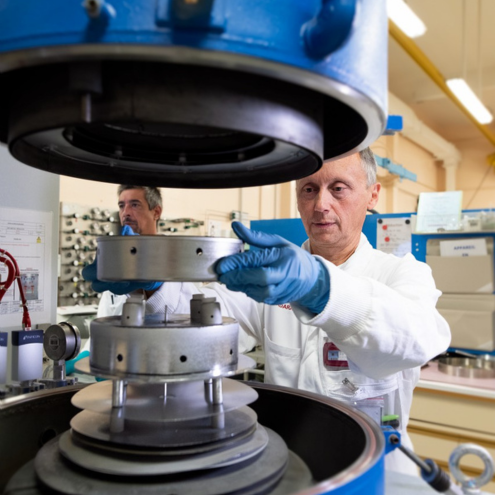
The UO2 laboratory is tasked with developing and optimising uranium-based powder and ceramic fabrication processes. These processes used to make the nuclear fuels powering the cores of different reactor technologies, as well as to characterise and measure the properties of these materials. These fabrication processes are mainly based on ceramic and metal powder metallurgy, as well as on the most recent processes like the additive manufacturing of ceramics. Through its activities, this laboratory has very close ties with the industry.
To meet the needs of the industry, our teams have access to a large range of equipment, which are used to study each of the phases of the fuel elaboration process. For this reason, our teams are able to recommend improvements to gain better control over the process and guarantee the quality of the finished product. This expertise in experimentation is combined with the skills needed to operate the PLEIADES platform when modelling the different phases of the power metallurgy process. The final scientific and technical objective is to develop a ‘digital twin’ of each manufacturing phase.
The UO2 laboratory is also used to develop new fuel concepts resulting from innovative design approaches, either through conventional powder metallurgy processes, or through new processes such as additive manufacturing, currently under development.
As the performance of any fuel is directly related to its properties and microstructure, our teams are focused on developing and implementing multi-scale physical & chemical characterisation and property measurement techniques to further improve our understanding of the basic mechanisms involved. This allows us to correlate these mechanisms with the fuel's microstructural characteristics, and thus better predict their changes due to irradiation.
There is also a large hall for experiments next to the UO2 laboratory, where our teams conduct upstream development phases for new processes, characterisation techniques and instrumentation in ‘cold’ (non-nuclear) conditions. This hall is also used for qualification tests on new equipment having been adapted for use in a nuclear environment, i.e. the UO2 laboratory or a hot cell in the LECA-STAR facility. Accordingly, this hall is equipped with a hot cell mock-up with remote manipulators.